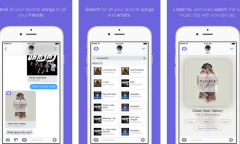By Abdul Muqeet, | October 26, 2016

The American Association of Paediatrics has released a list of guidelines to help parents control their child's exposure to screens.
As screens increasingly become a part of almost every sphere of life, the American Academy of Pediatrics (AAP) has published a new set of guidelines that details how much screen time is healthy for kids. The guidelines explain how much screen time should be allotted to small infants' right up to teenagers.
Like Us on Facebook
"Families should proactively think about their children's media use and talk with children about it, because too much media use can mean that children don't have enough time during the day to play, study, talk or sleep," Dr. Jenny Radesky, a pediatrician at the University of Michigan and a co-author of the new recommendations, said in a statement to Livescience. "What's most important is that parents be their child's 'media mentor.' That means teaching them how to use it as a tool to create, connect and learn."
According to the recommendations, kids less than 18 months of age should be kept away from screens as far as possible. Exceptions can be made in certain situations like video chatting. Here is an easy-to-remember list of the AAP guidelines, courtesy of Science News.
- If you want to introduce media to 18- to 24-month-olds, look for high-quality programs and watch the programs together.
- For kids two to five years old, limit screen use to an hour a day of high-quality programs, and watch the programs together so you can help them understand what they see and relate it to the world.
- Keep bedtimes, meals and play time media-free.
- Screens should be off an hour before bed, and they should not be in bedrooms.
Some families might either consider the guidelines too strict or too lenient depending on their lifestyle choices. The report is based on a long and extensive study which is expected to help cut down the recent surge of near-sightedness in children and adults.
-
Use of Coronavirus Pandemic Drones Raises Privacy Concerns: Drones Spread Fear, Local Officials Say

-
Coronavirus Hampers The Delivery Of Lockheed Martin F-35 Stealth Fighters For 2020

-
Instagram Speeds Up Plans to Add Account Memorialization Feature Due to COVID-19 Deaths

-
NASA: Perseverance Plans to Bring 'Mars Rock' to Earth in 2031

-
600 Dead And 3,000 In The Hospital as Iranians Believed Drinking High-Concentrations of Alcohol Can Cure The Coronavirus

-
600 Dead And 3,000 In The Hospital as Iranians Believed Drinking High-Concentrations of Alcohol Can Cure The Coronavirus

-
COVID-19: Doctors, Nurses Use Virtual Reality to Learn New Skills in Treating Coronavirus Patients
















